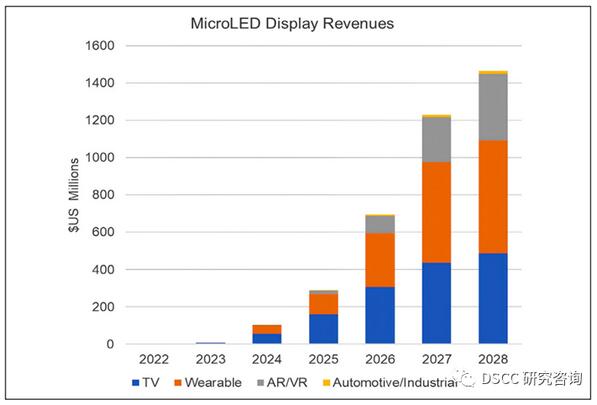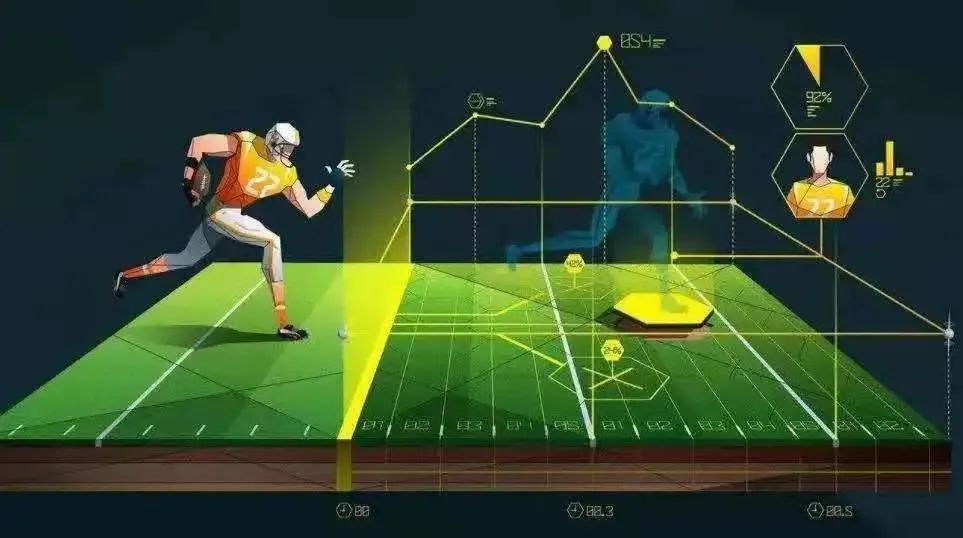According to the latest update from DSCC's MicroLED Display Technology and Market Outlook Report, it is expected that the market size of MicroLED displays will reach $1.46 billion by 2028.
Overall, our view has not changed: MicroLEDs will gradually appear in a few applications such as smartwatches, AR glasses, and car displays. However, due to the slowing penetration of AR/VR applications and the risk of delay in Apple Micro LED watches, we have lowered the latest version's prediction values.
Although there are currently some products available, MicroLED is still far from becoming mainstream technology. The first MicroLED smartwatch is planned to be launched next year, but even so, it is only aimed at the high-end market.

We still believe that wearable devices (including smartwatches) will eventually surpass TVs as the largest segment of the MicroLED display market. Wearable devices can benefit from the high brightness and efficiency of MicroLED displays. Meanwhile, smaller display screen size and lower pixel count can alleviate the problem of lower initial production during the manufacturing process.
Last year, we heard news that Apple would release MicroLED watches in 2025 to coincide with Apple Watch's 10th anniversary. Previously, Apple iPhone X also adopted a similar design, using OLED panels for the first time. But in this year's research, we saw that production was postponed to the third quarter of 2025. Apple may still officially announce new products in 2025, but the shipping time is likely to be in the first quarter of 2026.
So far, Samsung has been a leading brand of MicroLED TVs. At the 2023 CES, Samsung showcased seven different sizes, ranging from 50 inches to 140 inches. However, only an 89 inch model has been launched this year, priced at approximately $100000. Compared to other large screen high-end TVs, TCL recently released a 115 inch MiniLED LCD TV for the Chinese market, with 20000 dimming areas and a price of 80000 yuan (10900 US dollars). Although prices may decrease over time, DSCC believes that MicroLED TVs will still be a luxury item in the high-end market, with retail prices exceeding $20000. Samsung has also launched QD-OLED TVs, which have become a TV brand in the high-end TV market with MiniLED LCD, QD-OLED, and MicroLED technologies. LG has released 4K MagnIT displays (136 inches and 118 inches), but the technology is still based on the MiniLED COB method.
In the automotive field, MicroLED has been regarded as a high-order alternative display for LCD/OLED, or transparent displays that can achieve innovative design. Youda's current expected goal is to start production in 2026.
For AR/VR, MicroLED displays are manufactured as single LED arrays on silicon CMOS backboards to achieve the required high pixel density. Major companies such as Meta, Google, and Snap are all developing their own displays. We do not expect these companies to release MicroLED smart glasses soon.
Companies such as Vuzix and Oppo have showcased smart glasses that integrate MicroLED projection and diffraction waveguides. However, making full-color displays has always been a challenge. Jade Bird Display currently offers a multi-color projection that combines three monochrome displays to produce full-color images. Other solutions have recently been demonstrated, including quantum dot color conversion, epitaxial layer stacking, and dynamic wavelength adjustment, which will take some time to enter mass production.



